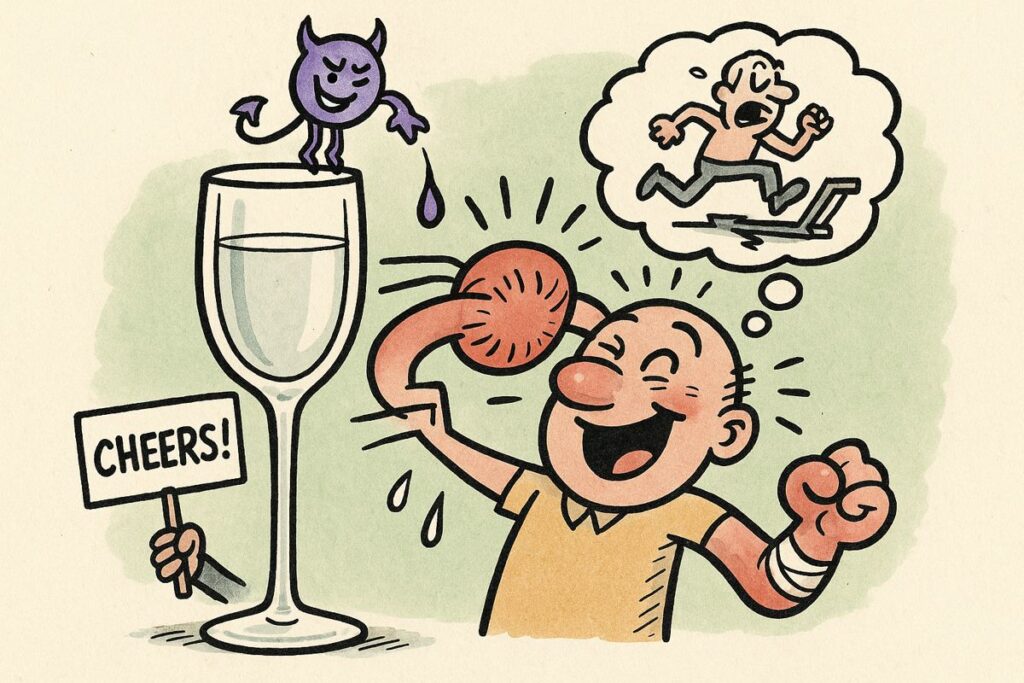Introduction
In January 2023, the World Health Organization (WHO) issued a statement that has ignited a worldwide conversation: no level of alcohol consumption is safe for human health. This declaration, reinforced by mounting scientific evidence and recent policy shifts in countries like Canada and the United States, challenges long-held beliefs about moderate drinking and compels a reexamination of alcohol’s role in society.
Alcohol: A Non-Essential, Toxic Substance
Alcohol is fundamentally a toxic chemical that the human body does not need for any biological function. Unlike water or vital nutrients, alcohol provides no essential benefit. The body processes alcohol as a poison, and there is no physiological requirement for it. Societies throughout history, such as many Indigenous groups and nations with religious prohibitions, have functioned—often more peacefully and healthily—without alcohol. Problems frequently only emerged when alcohol was introduced into these cultures, not before.
The Progression Principle and the Myth of Safe Moderation
While debates have persisted about safe drinking levels, evidence consistently shows that even small amounts can trigger patterns of heavier drinking, and alcoholism develops progressively. The concept of safe or moderate drinking is increasingly questioned, as alcohol acts as a continuous-acting toxin. Moderation, for many, proves an unreliable and sometimes impossible strategy, with complete abstinence being the only foolproof safeguard against alcohol-related harms.
Recent Guidelines and Scientific Consensus
The WHO’s recent position is bolstered by a 2021 study revealing that light to moderate alcohol consumption (just 1–2 drinks per day) was responsible for over 23,000 new cancer cases in the European Union in 2017 alone. Canada’s updated 2023 guidelines reduce recommended limits drastically to no more than two drinks per week, emphasizing there is no risk-free threshold for alcohol use. Similarly, U.S. health authorities warn that any alcohol intake increases cancer risk, contributing to tens of thousands of new cases and deaths annually.
Alcohol is a recognized carcinogen linked to at least seven types of cancer and more than 200 diseases and conditions. Its harms extend beyond the individual, affecting families and communities through accidents, violence, and secondhand health consequences.
The Myth of Stress Relief
Despite persistent cultural beliefs, scientific evidence now shows that alcohol does not relieve stress; in fact, it can exacerbate it. Perceptions of alcohol’s relaxing effects are rooted in outdated myths, with research indicating that alcohol disrupts our stress response and overall mental health.
Debates About Potential Benefits
While some studies have suggested modest benefits of alcohol consumption—such as reduced cardiovascular risk or better outcomes in certain chronic diseases—these findings are confounded by methodological issues. The WHO and leading researchers point out that no study has conclusively shown that these potential benefits outweigh the well-documented risks of alcohol, especially regarding cancer. Moreover, such benefits may be limited to specific populations and are not observed universally.
Individual Risk, Medications, and Special Populations
For individuals with certain medical conditions, especially those taking liver-metabolized medications like methotrexate, alcohol use poses added risks. Guidelines on combining alcohol with such drugs differ globally, but the consensus is increasingly moving toward caution or abstinence.
Vulnerable and disadvantaged populations carry a disproportionate burden of alcohol-related harm, highlighting the need for targeted public health strategies and clear, accessible education on the risks of drinking.
Quality of Life and Social Norms
Despite the accumulating evidence, the cultural association between alcohol and enjoyment, relaxation, or socialization remains strong. While some may weigh the small absolute risk of light drinking against perceived gains in quality of life, it is essential to recognize that the notion of “safe” drinking is a myth. Any use comes with measurable risk, and for many, particularly those with a history of alcohol problems, the only reliable solution is to avoid alcohol entirely.
Conclusion
The latest science and global policy changes converge on a simple, if sobering, reality: alcohol is a non-essential, toxic substance for which no safe consumption level exists. While calls for moderation and responsible drinking persist, the safest choice for health is abstinence. As awareness grows and guidelines evolve, individuals and societies must reconsider long-standing attitudes toward alcohol, recognizing that the days of assuming a daily drink is harmless are behind us.



